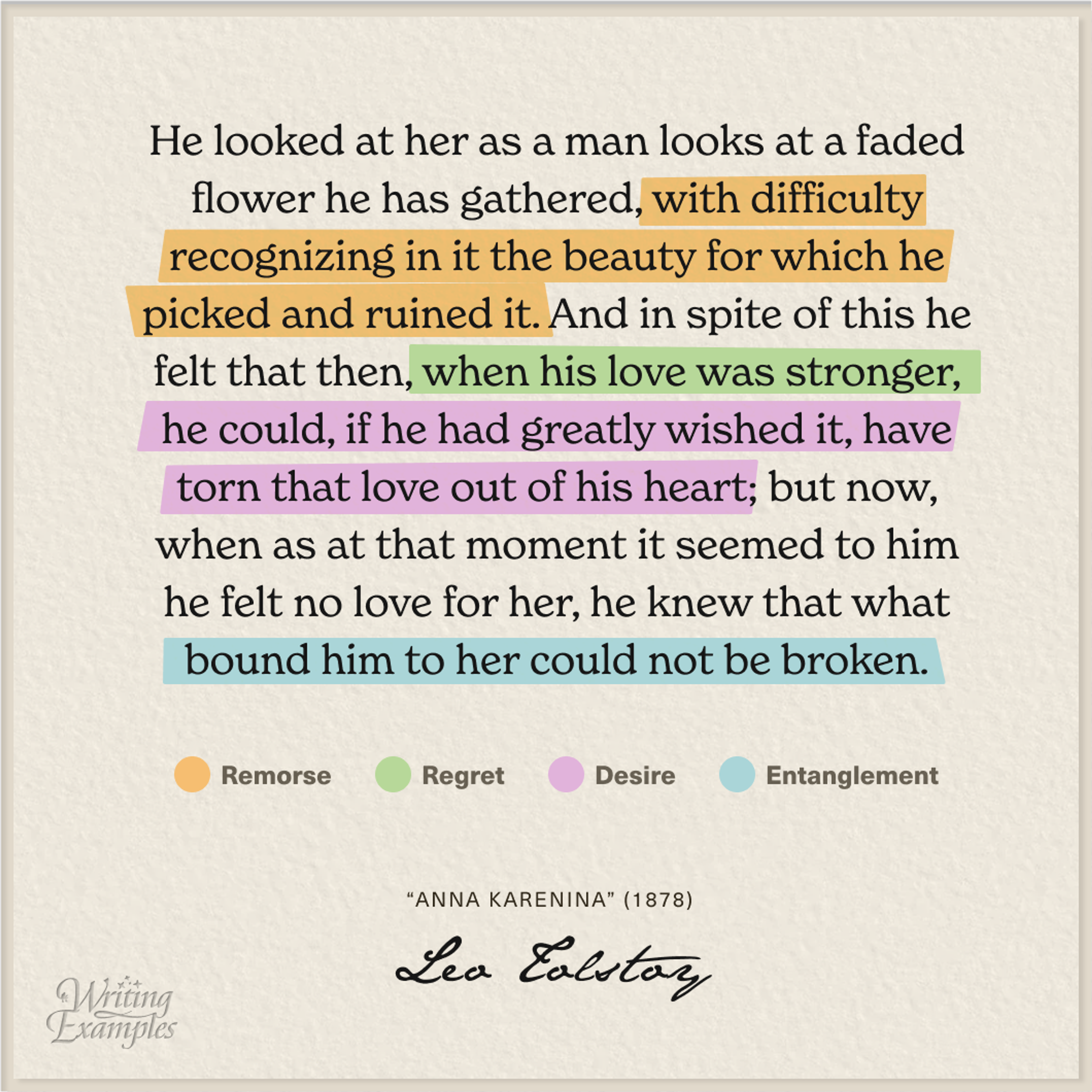HOW TO
Get Inside YourReader’s Mind
By
Sherry Ning


emorse, regret, desire, entanglement. Writers often show you how a character is feeling by describing their actions. That’s one way to reveal a character’s inner world — through subtext — but it’s not the only way. Tolstoy’s cocktail of emotions is an example of a different approach: psychological realism.
This technique explicitly describes the interior state of a character’s mind. There is little to no subtext. Tolstoy is telling — not showing — you how his character Vronsky feels. It’s an emotional excavation, prompting you to think, “I’ve been there. I know how that feels.” Through describing the messiness of human emotion, Tolstoy draws you in and helps you relate to Vronsky.
The result? A reading experience that feels like being led out of a cave by a dim, distant light. You feel Vronsky’s pain, his indecision, his irreconcilable yearning. You understand his motivation.
When you write with psychological realism, your text becomes an exploration of the human condition, focusing on the rich interior world of your character’s mind. Psychological realism isn’t just an artistic flair; it’s a tool that lets your reader ache in sympathy with your characters.
Read More
Write like the Greats
New Writing Examples, right in your inbox.
“Beautiful, playful, and high-quality. Kudos.”
Clayton
from Missouri, USA



